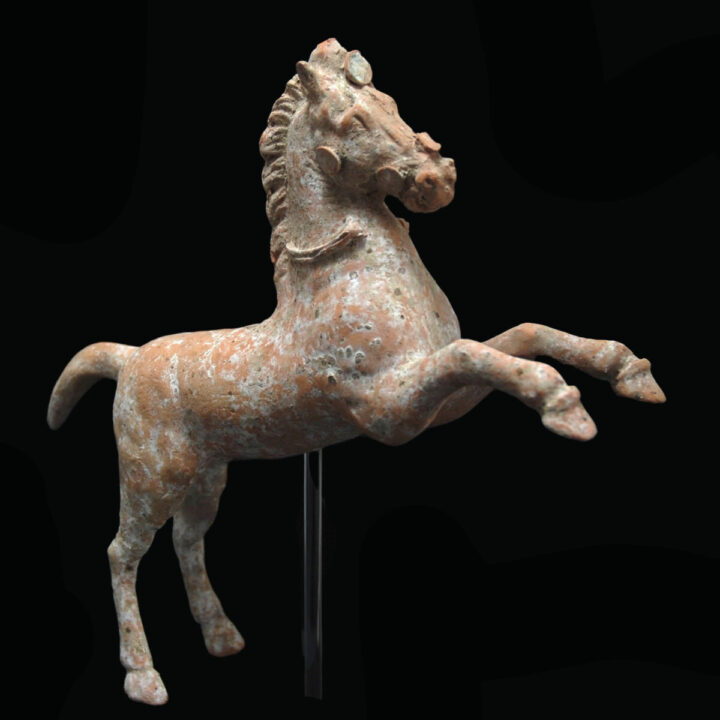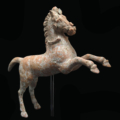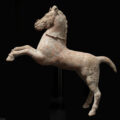Large Terracotta Horse from Canosa
Culture: Greek/Canosan
Period: 3rd century B.C.
Material: Terracotta
Dimensions: 24 cm x 25.5 cm
Price: Sold
Ref: 2546
Provenance: Belgian private collection, acquired in November 1996 by André de Munter Archéologie in Brussels, Belgium. With a document by André de Munter, as well as an old photograph of November 1996.
Condition: Very well preserved.
Description: Exceedingly vigorous and lifelike terracotta sculpture of a horse from Canosa. The animal in a rearing up posture with raised forelegs and slightly downwards hooves. The hindlegs with tensed muscles are also stretched out. The tail is raised. Legs, back, flank, belly and chest are anatomically diligently modelled. The head with a short, thick mane is also worked out in detail – with eyes and bulging brows, with a strong, closed mouth. Parts of the bridle are still preserved. On the forehead, on the ganaches, as well as around the mouth disc-shaped decoration, which lends the animal a special status. Horses were considered as a symbol of prosperity during the Hellenistic period and were found as high-quality statuettes for votive offerings in tombs and temples. A perforation on the back assumes that a rider, which was seperately worked out, once sat on the back of the animal. See for the typus the statuette in the Museum of Fine Arts in Boston with the Accession Number 1981.385a-b. Mounted.






